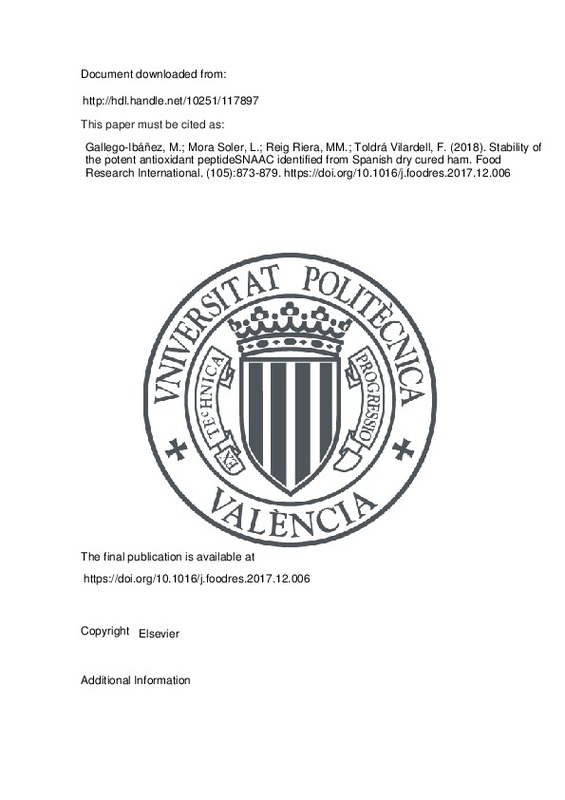JavaScript is disabled for your browser. Some features of this site may not work without it.
Buscar en RiuNet
Listar
Mi cuenta
Estadísticas
Ayuda RiuNet
Admin. UPV
Stability of the potent antioxidant peptideSNAAC identified from Spanish dry cured ham
Mostrar el registro completo del ítem
Gallego-Ibáñez, M.; Mora Soler, L.; Reig Riera, MM.; Toldrá Vilardell, F. (2018). Stability of the potent antioxidant peptideSNAAC identified from Spanish dry cured ham. Food Research International. (105):873-879. https://doi.org/10.1016/j.foodres.2017.12.006
Por favor, use este identificador para citar o enlazar este ítem: http://hdl.handle.net/10251/117897
Ficheros en el ítem
Metadatos del ítem
| Título: | Stability of the potent antioxidant peptideSNAAC identified from Spanish dry cured ham | |||
| Autor: | Mora Soler, Leticia | |||
| Entidad UPV: |
|
|||
| Fecha difusión: |
|
|||
| Resumen: |
[EN] Antioxidant peptides positively regulate oxidative stress in the human body as well as delay, retard or prevent protein and lipid oxidation in food products. Spanish dry-cured ham has been reported as a good source ...[+]
|
|||
| Palabras clave: |
|
|||
| Derechos de uso: | Reconocimiento - No comercial - Sin obra derivada (by-nc-nd) | |||
| Fuente: |
|
|||
| DOI: |
|
|||
| Editorial: |
|
|||
| Versión del editor: | https://doi.org/10.1016/j.foodres.2017.12.006 | |||
| Código del Proyecto: |
|
|||
| Agradecimientos: |
Emerging Research Group Grant from Generalitat Valenciana in Spain (GV/2015/138) and Juan de la Cierva postdoctoral contract to LM are acknowledged. Grant Agreement 614281 (HIGHVALFOOD) and contract to MG are also acknowledged. ...[+]
|
|||
| Tipo: |
|







![[Cerrado]](/themes/UPV/images/candado.png)


